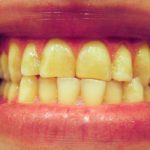
Bruxism involves repetitive jaw-muscle activity with clenching or grinding of the teeth. It occurs either during sleep (sleep bruxism) or while awake (awake bruxism) and is associated with tooth wear, tooth mobility and fracture of restorations. Sleep bruxism(SB) diagnosis usually relies on a diagnosis of tooth wear but is linearly related to SB activity. polysomnography (PSG) with audio–video (AV) recordings is currently considered to be the reference standard for a definitive diagnosis.
The aim of this review was to evaluate the diagnostic validity of questionnaires, clinical assessment and portable diagnostic devices compared to the reference standard method polysomnography (PSG) in assessing sleep bruxism (SB).
Methods
Searches were conducted in the Embase, Latin American and Caribbean Health Sciences (LILACS), PubMed, Science Direct, Web of Science, Google Scholar, Open Grey and ProQuest databases. Diagnostic test accuracy studies that compared questionnaires, clinical assessment or portable diagnostic devices for SB, with the reference standard method PSG were considered.
Two reviewers independently selected studies and abstracted data with study quality being assessed using the Quality Assessment of Diagnostic Accuracy Studies tool (QUADAS-2) tool. The main outcomes were sensitivity and specificity. Positive predictive value (PPV), negative predictive value (NPV), positive likelihood ratio (LR+), negative likelihood ratio (LR) and diagnostic odds ratio (DOR) were secondary outcomes. Studies were considered as three groups; questionnaires, clinical assessment, portable diagnostic devices. Data were combined using a random effects meta-analysis and overall quality of evidence was assessed using Grading of Recommendations Assessment, Development and Evaluation’ (GRADE) summary of findings (SoF) tables.
Results
- 8 studies involving were included for the qualitative synthesis, with 7 contributing to the quantitative synthesis.
- Only 1 study was at low risk of bias. 7 studies were considered to be at high risk of bias for sample selection.
- Sensitivity, Specificity, PPV, NPV, Positive and Negative Likelihood ratios and DOR were presented for each test.
- The four-channel EMG/ECG recorder showed the highest validity measures from all studies, being able to identify subjects with SB as well as without SB
- GRADE assessment of the quality of evidence was very low to moderate.
Conclusions
The authors concluded: –
Based on the available evidence, questionnaires and the clinical assessment can be used as screening methods to identify non-SB individuals, although it is not that good in identifying subjects with SB. Portable diagnostic devices showed the best validity of all evaluated methods, especially as far as a four-channel EMG/ECG recording is concerned.
Comments
An extensive literature search in multiple databases has been undertaken for this review but only a small number of studies met the inclusion criteria. Data from individual sub-groups from the questionnaires and portable devices have providing a helpful summary of the various outcomes. The discussion section raises the issues of potential over diagnosis ranging from 2-29% with use of questionnaires, 0.14-10% with clinical assessment and 0-8% with portable diagnostic devices. The authors note some debate regarding the reference criteria for PSG which may result in a reappraisal. While this review provides a good overview of the available diagnostic studies concerns regarding their quality needs to be recognised.
Links
Primary paper
Casett E, Réus JC, Stuginski-Barbosa J, Porporatti AL, Carra MC, Peres MA, de Luca Canto G, Manfredini D. Validity of different tools to assess sleep bruxism: a meta-analysis. J Oral Rehabil. 2017 Sep;44(9):722-734. doi: 10.1111/joor.12520. Epub 2017 Jun 5. Review. PubMed PMID: 28477392.
Other references
Original review protocol on PROSPERO
Dental Elf – 30th Jun 2015
Picture Credit
By en:user:DRosenbach – en:Image:Deviated midline.JPG, Public Domain
